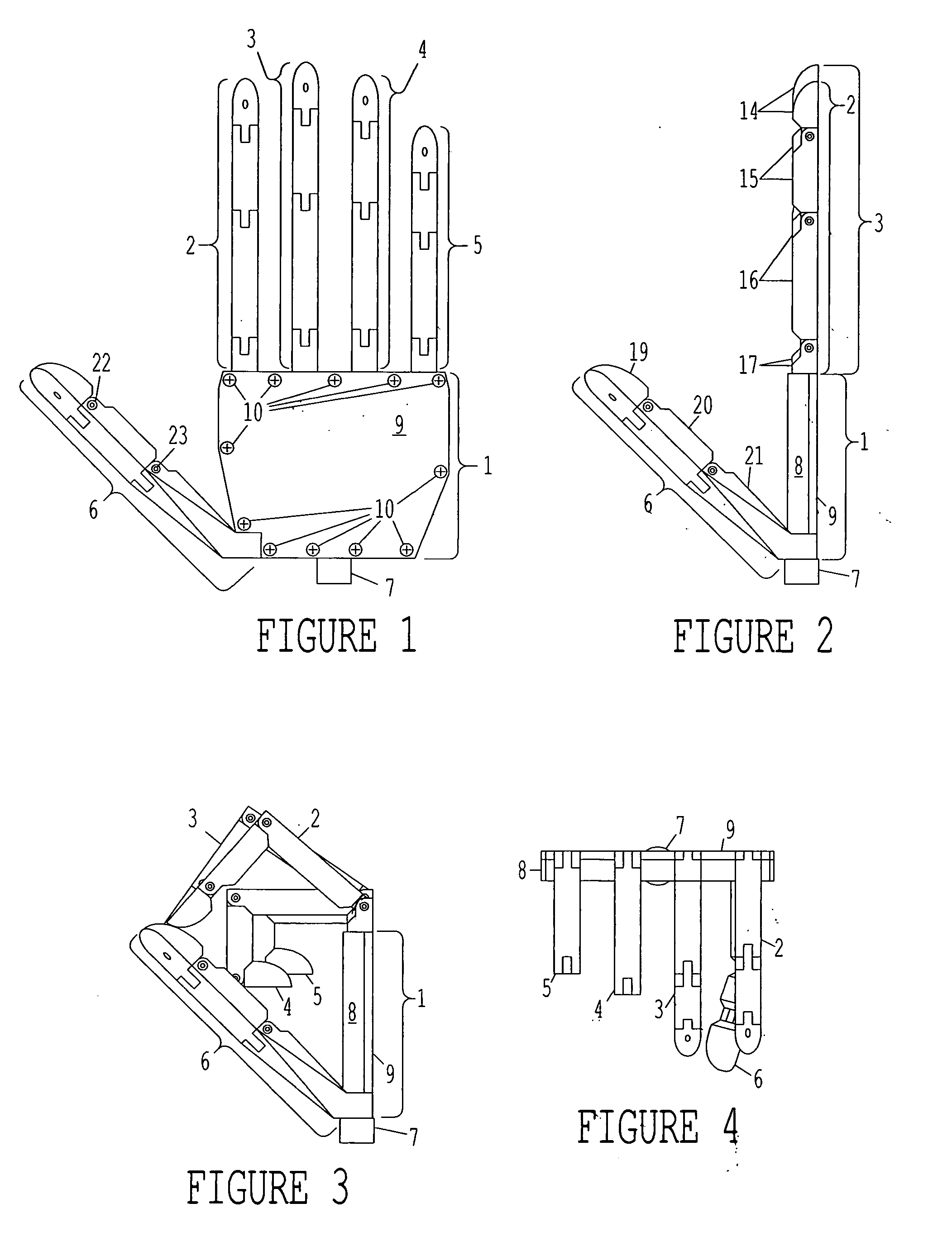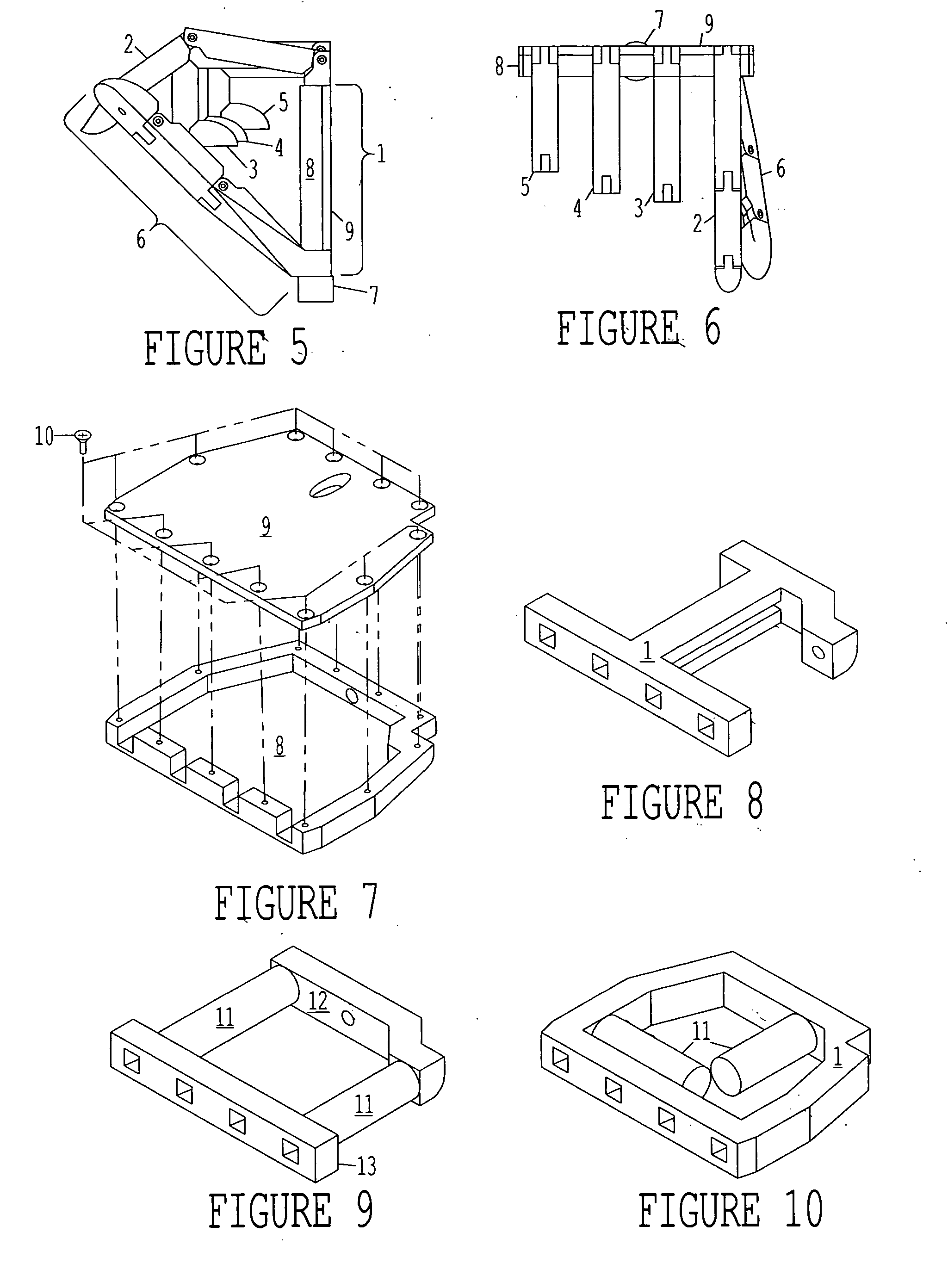Prosthetic hand having a conformal, compliant grip and opposable, functional thumb
a technology of prosthetic hands and thumbs, applied in the field of prosthetic hands, can solve the problems of limited range of opening the hook in order to grasp an object, loss of ‘good view’ quality of split hooks, and still the same usability problems
- Summary
- Abstract
- Description
- Claims
- Application Information
AI Technical Summary
Benefits of technology
Problems solved by technology
Method used
Image
Examples
Embodiment Construction
[0058] As seen in FIG. 1, the hand is made up of 7 distinct parts. Item 1 forms the frame of the hand. This frame (1) provides for the attachment of the fingers (2, 3, 4, 5), and the thumb (6). The frame (1) also contains the mechanism that allows the self biasing between the fingers (2-5), part of the hinge that allows opposition of the thumb (6), and the socket attachment point (7), allowing the amputee to wear the device. The attachment point (7) is a threaded piece of material that conforms to the standard attachment methods currently in use.
[0059] The thumb (6) can be rotated in opposition to the fingers (2, 3, 4, 5) as seen in FIG. 2. The thumb (6) and fingers (2, 3, 4, 5) are self-biasing to allow conformal grip. This will be explained in detail in later paragraphs. FIGS. 3 and 4 show the hand in a “clutching” position. The thumb (6) is rotated into opposition to the fingers (2, 3, 4, 5), and flexed, and the fingers (2, 3, 4, 5) are flexed to make contact with the thumb (6)....
PUM
 Login to View More
Login to View More Abstract
Description
Claims
Application Information
 Login to View More
Login to View More - R&D
- Intellectual Property
- Life Sciences
- Materials
- Tech Scout
- Unparalleled Data Quality
- Higher Quality Content
- 60% Fewer Hallucinations
Browse by: Latest US Patents, China's latest patents, Technical Efficacy Thesaurus, Application Domain, Technology Topic, Popular Technical Reports.
© 2025 PatSnap. All rights reserved.Legal|Privacy policy|Modern Slavery Act Transparency Statement|Sitemap|About US| Contact US: help@patsnap.com



